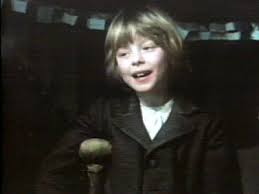Schultz’s Fear
Charles M. Schultz took a professional risk when he scripted A Charlie Brown Christmas. Most other Christmas stories of the time stopped short of mentioning the true reason for the season. Schultz had Linus quote from Luke, chapter two, of the King James Version of the Bible, which tells the story of Christ’s birth. He insisted on keeping this scene in the movie, and I’m so glad he did. Since he had the courage to leave it in, it’s made his beloved tale a spiritual inspiration for generations as it professes the true meaning of Christmas. It strengthens faith and gives hope to those who believe. For some people, it might be the only exposure they have to the good news of the gospel, but that’s okay. It plants a good seed in soil that might be ready to nourish it given enough time.
Charlie Brown’s Quest
Charlie Brown was upset with how commercialized Christmas had become. He saw the effect on Sally, Snoopy, and all his friends. He tried to get involved with a community play, and that backfired. But all along, his best friend Linus was at his side during his search.
Linus: Faith vs. Fear
Linus’ role in the story was that of Charlie Brown’s Sherpa. He was his best friend. He walked with Charlie Brown throughout the story as Charlie tried so hard to understand the meaning of Christmas. When Charlie thought he had killed the little tree with the heavy ornament, he entered his “dark night of the soul” as he cried out, “Doesn’t anyone know the true meaning of Christmas?”
At that moment, Charlie Brown was finally ready for the answer. Linus stood alone on a stage and the magic began. He quoted the story of the birth of Jesus Christ directly from the Bible. At the point when the angels appeared to the shepherds, Linus did something profound. Linus, the epitome of insecurity, showed his faith at the exact moment he quotes the angels. “Fear not!” He dropped his blanket and raises his arms high.
For fifty-plus years I had seen Linus as someone grounded in his understanding of Christ who walked with faith every day. When the time was right, he was ready to teach his best friend all about the Savior of the world. But was he really so strong, waiting to exercise his faith?
In reality, Linus was a child filled with insecurity, which was why he carried his blanket in the first place. He was never seen without it, and he surely never lets go of it. He knew the scriptures, even had them memorized, but he also held deep insecurities symbolized by the blanket. It seemed almost contradictory that an insecure child would rise up and display faith. But it makes perfect sense if we are to internalize the message.
We all have fear—but can we have faith?
Linus is my favorite character in the story because he most resembles me. I have faith. I know the scripture stories. I’ve taught church youth and adult classes. I fancy myself a spiritual guide for those in need. But when it comes to my personal journey, I often walk around clutching my bundle of insecurities afraid to take leaps of faith. I know I should drop my fears, but it’s difficult when they’ve become so comfortable. Sometimes it takes a children’s story to remind me that faith is stronger than fear. When I remember the eternal message of Jesus Christ, the story with the surefire ending of hope and life and everlasting peace for all, I can drop my fear, even for a moment, and take a step into the light of faith. Fear departs and faith endures.
Fear Not—it’s a command and a promise
Saying no to fear allows us to move forward hand in hand with God. Granted, it might be in unseen territory, but if the direction is positive and productive, leading toward life, then we are in good hands.
Was it a coincidence that Charles M. Schultz showed Linus dropping his blanket? Schultz was a deep thinker and a man of faith—I would bet it was more by design. You could say he had a double mission in the telling of this story. Not only did he fight to keep the scriptural reference scene, but he also wanted to send a message to us—drop our fears and look toward faith. His design worked. Not only is the movie still a family favorite, but it also has lasting power and profound influence on generations even to this day.
2019: A Year to Fear Not
The idea of Linus dropping his fear strengthens me to walk away from my insecurities and make 2019 a year of success. Are you with me? Let’s fear not. Let’s let faith open doors that lead to better things. Happy New Year!












